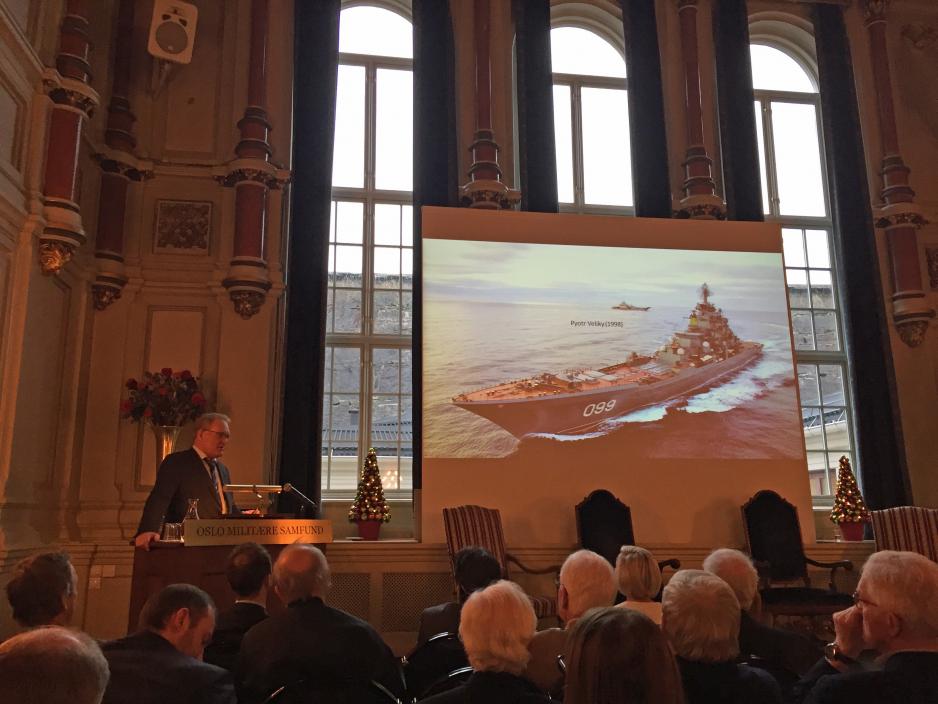NATO reluctant to engage in the Arctic

Experts and policy makers agree that NATO is in need of more situational awareness in the High North, but faced with urgent security threats from the South and the East, NATO is reluctant to engage further in the Arctic.
NATO’s role in the Arctic was the topic of an event hosted by the Norwegian Institute of Foreign Affairs (NUPI), The Norwegian Atlantic Committee, The German Marshal Fund of the United States (GMF) and the US Mission to NATO in Oslo recently. The experts and policy makers discussed what Norway and NATO’s priorities should be after the 2016 Warsaw Summit and how NATO can strengthen its maritime strategy in the North.
Reduced presence in the Arctic
During the Cold War the Arctic region was heavily militarized, politically sensitive and an important part of strategic deterrence of both NATO and the Soviet Union. After the end of the Cold War, NATOs focus has gradually shifted away from the Arctic. NATO command and control structure has shifted its point of gravity from northern Europe towards the Mediterranean as a result of the organization’s enlargement and a focus on so-called “out of area” operations. Although fifty percent of the circumpolar region is the territory of a NATO member, NATO does not have a specific Arctic policy and therefore no clear role in the region.
Norway - the gatekeeper to the North
"A strong NATO presence in the North is in the US’ and Norway’s interest", said Øystein Bø, State Secretary of the Norwegian Ministry of Defense at the event. Bø specifically pointed to the new security environment in Europe after Russia’s actions in Ukraine, and the increasing human activity in the Arctic. Norway has for a long time pushed to strengthen NATO’s maritime capabilities, especially in the North Atlantic.
Ahead of the Warsaw Summit this year, Norwegian Minister of Defense Ine Eriksen Søreide wrote in a statement "NATO needs a coherent and robust long-term strategy to deal with the new security environment. A key element of that strategy must be maritime power and presence in the North".
State Secretary Bø underlined the need for increase in training, exercises and presence, as well as improving NATO command and control structure in the Arctic.
Timo Koster, Director of Defense Policy and Capabilities at the NATO Headquarters agreed that NATO needs more situational awareness in the North Atlantic, but underlined that the involvement in the region must go beyond NATO.
"The North Atlantic reinforcement has to come from the North", he said, pointing specifically to Nordic cooperation as a key component.
Understanding Russia’s motivation
The new security environment in Northern Europe and Russia’s capabilities in the North poses a key strategic challenge to NATO in the Arctic. Russia has been going through an overall rearmament program since mid 2000, and since 2008 there has been a modernization of the Russian Navy, reopening of military bases in the Russian Arctic, large military exercises and an increase in Russia’s presence in the region through the creation of Arctic brigades and command centers.
NATO’s Timo Koster and US deputy permanent representative to NATO Earle Litzenberger said that they are having trouble understanding Russia’s motivations in the Arctic and elsewhere.
"The view of Russia as aggressive is based on facts", said Koster and pointed to violations of treaties, a threatening rhetoric and the annexation of Crimea. Litzenberger underlines that NATO wants to engage with Russia, but also demands more openness from Russia in regards to military exercises. He specifically points to Vienna document obligations, which promotes information exchanges regarding defense planning, military exercises, military activities, military forces and structures and other security building measures
Russia has held a number of unannounced snap exercises in the Arctic since 2014, such as a snap combat readiness exercise for the Northern Fleet in March 2015, a snap air force drill in May 2015 and a snap combat exercise of the Armed Forces, including the Northern Fleet in August 2016.
However, Koster and Litzenberger do not think that a conflict will start in the Arctic, but worry that the region might be affected by tension elsewhere.
Defensive measures perceived as offensive
Ståle Ulriksen, a Research Fellow at the Norwegian Institute of Foreign Affairs, holds that Russia’s actions in the Arctic are purely defensive, and that NATO should avoid escalating the already damaged relationship between Russia and the West.
“We have to respect Russia’s defense in the North,” he says.
All the panelists agreed that stability, predictability and cooperation with Russia is needed in the Arctic, but the question is whether these goals are attainable with a more involved NATO in the region.
